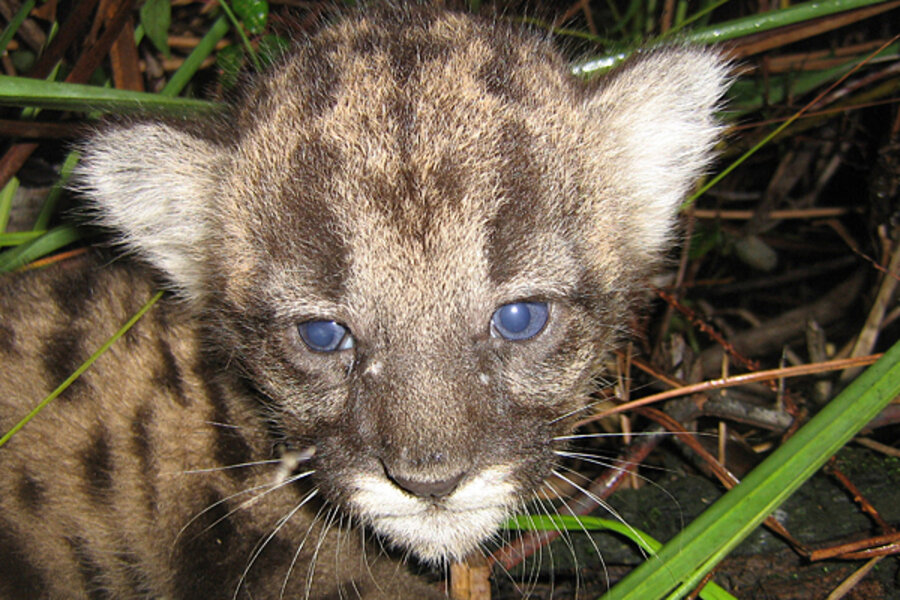Florida panther comeback a success story with many asterisks
Loading...
Endangered Florida panthers are inching back from the brink of extinction thanks to eight female cougars introduced from Texas 15 years ago.
The gain in numbers is modest. The population has grown from about 25 adults in the Sunshine State 15 years ago to roughly 100 today.
More telling biologically is the badly needed shot of genetic diversity the females introduced into a badly inbred population, researchers say. Many of the big cats are healthier, more readily able to resist disease, more reproductively successful, and are freer of serious physical deformities that signaled a group of animals undergoing genetic collapse.
That is the picture that emerges from a long-term panther monitoring program conducted by a team of scientists from federal and state agencies as well as from the Smithsonian Institution and the University of Florida.
"Given the changes we've seen in the population, the genetic results are cause for optimism," says David Onorato, a conservation biologist with the state's Fish and Wildlife Research Institute, based in St. Petersburg.
But the story, captured in a research paper the team published in the today's issue of the journal Science, is as much a cautionary tale as it is a reason for optimism, he and other conservation specialists say.
Intervention of last resort
Importing females to introduce a more diverse set of genes to an isolated population of animals on the brink of genetic collapse represents an intervention of last resort.
The effort represents the kind of active management that will become increasingly necessary, particularly to conserve large, charismatic species that historically have roamed across broad swaths of continents.
"The world is losing its spaces," notes Craig Packer, an ecologist at the University of Minnesota, who was not part of the research team. As habitats for large, top-of-the-food-chain animals become increasingly fragmented and isolated from each other, they set the stage for declines similar to the Florida panthers' plight.
Those remaining populations "are going to require a lot of management to sustain them well into the future," Dr. Packer says.
The Florida panther, actually a variety of cougar, was listed as an endangered species in 1967. Researchers say it is the only surviving subspecies of eastern cougars in the US, although its status as a subspecies has been the subject of scientific dispute.
The cats' decline, however, is indisputable. The 25 surviving adults in 1995 displayed a wide range of physical quirks and outright deformities that biologists say are hallmarks of inbreeding.
Each breeding group – one male and from two to five females – typically requires 200 square miles to sustain it. A century of development in Florida cut off the state's population from others that roamed the southeast from the Carolinas to Texas while at the same time squeezing the cats into an an increasingly confined region of the state.
By bringing the females in from Texas, conservation specialists essentially were trying to mimic the kind of gene flow that existed before Florida's explosive growth.
No room to roam
They succeeded, although the gains are temporary. In the end, habitat remains the major stumbling block.
Federal and state agencies, along with conservation groups, have made progress in holding the line against additional habitat loss, says Jeff Danter, who heads the Nature Conservancy's effort in Florida.
But merely holding steady may not be enough.
"A population of 100 is still not viable in the long term," Dr. Onotaro says. No readily accessible habitat exists for these animals that would allow them to meet up with other panther populations and interbreed, thereby contributing to each population's genetic diversity.
"Unless something changes and we get another population of panthers set up somewhere close by where there could be that kind of interchange, it's a project that's going to have to be done again," he says, referring to a panther's version of "Seven Brides for Seven Brothers."





